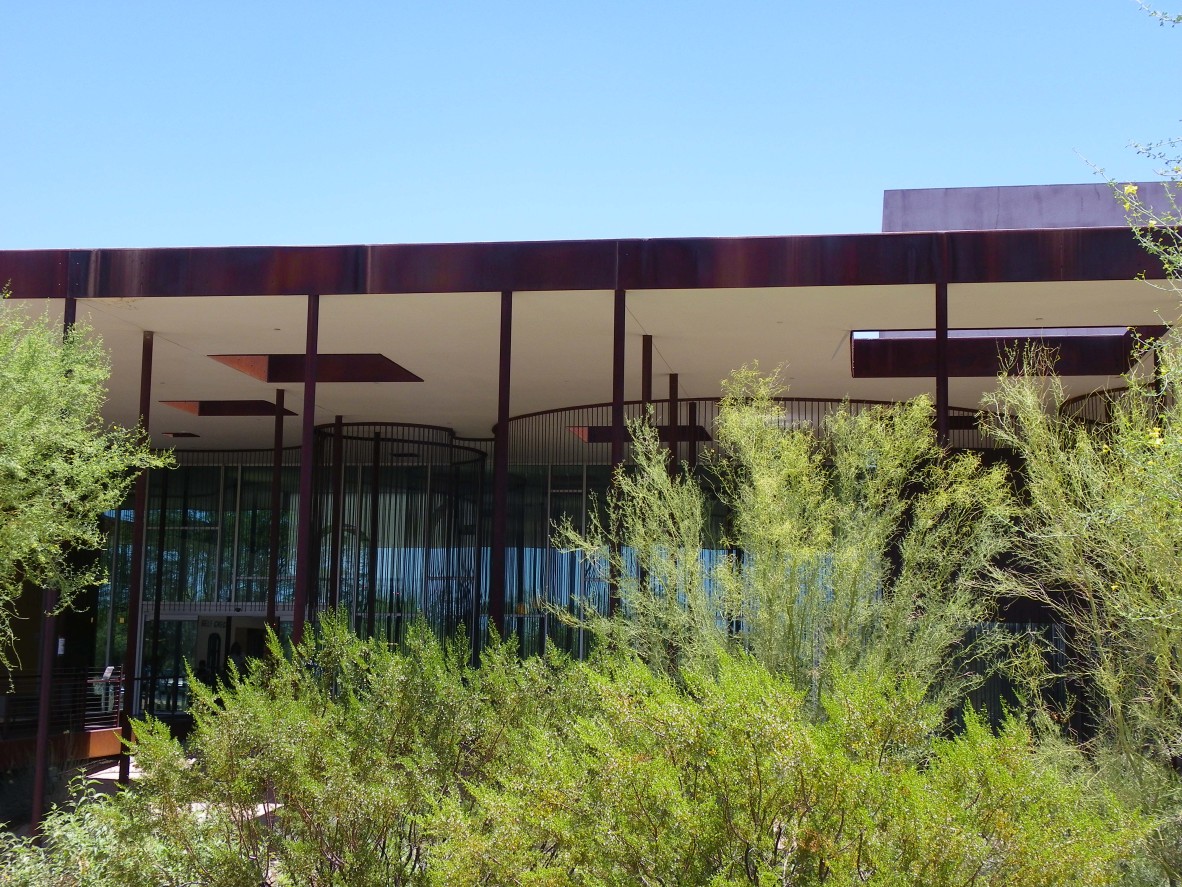Thinking about the role of libraries in the future means thinking both about a location based library (a building) and a library which is also wherever you are (because you can access it online or in many places). Library services are a combination of these elements. A good library building is important and so is impressive mobile access to library collections, services and skilled staff. A library can potentially be wherever any of us are if we can access the services, collections and staff expertise of the library in a similar way to which we can when we are in the library building. With all planning about libraries for the future we need to think about how people not in the library can have an exciting and interactive experience.
Library buildings are still critical as there are many things which are best done in these spaces, and they bring a broad range of the community together..
Perhaps local studies information will be made available in location specific ways. You should be able to find out continually updated or changing information about a place. You may be prompted to explore different newspaper articles from the national newspaper database on Trove. An example of this could be visiting in an historic main street (or the one where you live), and being able to easily find out information about the people who had businesses there in the past, where more information exists. It could be linking to a search in the library catalogue to see if local studies information exists, or a history of the area for some of the more famous residents or for anyone who has information in a digitised newspaper. It could be that there are triggers based on each address giving you basic information about that place, or even photographs from different times to help people think about their community, or where they are visiting. It should also be possible to stand in the main street, contact the library and find out about the area. This raises the question of how do you know how to contact the library? That is the interesting question. It could be promotional signs, there could be a QR code. There are lots of options. Do library staff take their skills outside the library with community reference? This could be library staff providing their skills to local community groups, helping them with research.
Think about it, from the main street of your town or suburb, how do you know to contact the library for information about the area you are in? It may be possible if the library is there, but how else? What are the options when the library is shut? Is there a prompt to find out about digitised oral histories of community members? Is it easy to find the scanned subdivision plans or maps for the area you are standing in? Is it easy to see them on your mobile device? Are they raw data or connected in a story? Is the local library or council helpfully providing free wifi so you can see these detailed maps and images with no data charges?
A couple of years ago a grocery shop ran a promotion with banners which you could scan for online shopping. They made me realise that I had not seen similar banners for libraries. It would be lovely to be walking down the street and be told that I could contact my library, from wherever I am, to find out more information from skilled staff. Or maybe I could find out more about some local images which were on display in the street, or watch a video which would help me connect better with this community. I may even be able to download an ebook. I would suggest reading the recent Ylibrary post by Eli Neiburger for some of the complexity of this area.
Libraries are about stories. Some of the stories are real, and some are not. The stories are all through the collections and services, and the skilled staff help expose them. When I am looking to use a library the big question is how can I access the stories? This is followed by how can I find out the stories behind the stories? These questions show the importance of the combination of skilled staff, services and collections, and are vital for planning for future libraries. The stories may be about the past, or derived from past. They could be a game made using a library maker space which helps tell the history of the area. It could be an art work made from out of copyright, or creative commons licensed images from the library collection. It could be research about a local sporting group which was compiled after training session run by the library and using a mix of library and other resources.
This leads on to how can people access the content which has been created as a result of library interactions. Did the library collect a copy for the community? It could be research about the community (a street, a house history, a sporting group), the research could be a novel, a game, an art work, a building (in which case photographs rather than a copy of the building, although there could be a 3D printed model). In the future it would be lovely for libraries to collect this diversity of material derived from their collections. This connects to some of the ideas of sharing raised by Eli Neiburger.
Tim Sherratt, in his recent presentation From portals to platforms: building new frameworks for user engagement demonstrates the value of libraries working together and making their content available – but also shows examples of how people are using some of the amazing Trove resources. This is the telling stories about people sharing the results of their research.
The twitter reading group which is run collaboratively by libraries across NSW, and with partner libraries in other locations including Townsville, also demonstrates the importance of collaboration now and in the future. You can participate in the reading group by adding #rwpchat to your tweets. There are different themes each month, and there are lots of ways to participate http://readwatchplay.wordpress.com/about/ you don’t have to tweet. This highlights a long standing trend which will grow further in the future of libraries collaborating to provide services for clients, using whatever tools are most appropriate.

When thinking about library buildings for the future it is important to really think about the future. Any planning needs to be able to include changes in how the space is used in the future. More people are visiting libraries for longer, and this needs to be taken into account in the design. There are some libraries which communities find exciting being designed around the world. For example Desert Broom Library and Appaloosa Library, both in Arizona show smart use of outdoor shaded areas in hot climates as well as many other features to help their communities learn, relax, discover, share and enjoy. The new Birmingham Library shows thoughtfulness about local studies and the many ways the community can engage with collections, services and skilled staff. Looking at the Birmingham Library website also highlights that all the elements need to be working together, as they are demonstrating with effective online and in library services.

People places, a State Library of NSW publication provides some helpful advice for thinking about library buildings.
Make sure you add your ideas to the mix by adding your comments to this post or via social media /whats-on/programs/why-library and using the Ylibrary hashtag (#ylibrary).
Follow Ellen on Twitter @ellenforsyth
Comments
Your email address will not be published.
We welcome relevant, respectful comments.